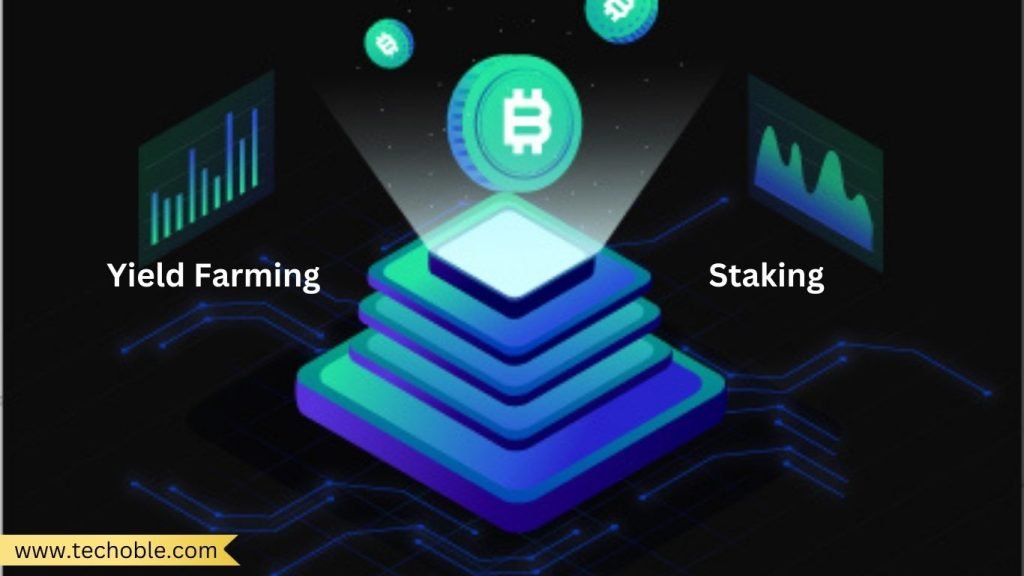 What Is Decentralized Finance (DeFi) and How Does Blockchain Power It?
What Is Decentralized Finance (DeFi) and How Does Blockchain Power It?
Decentralized Finance, or DeFi, is transforming the world of finance. Instead of relying on traditional banks and financial institutions, DeFi uses blockchain technology to create a transparent, secure, and open financial system. In this article, we’ll explore what decentralized finance (DeFi) is, how it works, and the powerful role blockchain technology plays in making it possible.
What Is Decentralized Finance (DeFi)?
DeFi is a new approach to finance that removes the need for banks or other intermediaries. Instead, transactions are peer-to-peer, meaning they happen directly between users. This is made possible through a combination of blockchain technology and smart contracts, allowing for a financial ecosystem that is accessible, transparent, and controlled by its users.
Key Features of DeFi:
- Accessibility: Anyone with an internet connection can access DeFi services.
- Transparency: All transactions are recorded on a public blockchain.
- User Control: Users manage their own assets without needing a third-party intermediary.
How Does DeFi Differ from Traditional Finance?
In traditional finance, banks and institutions handle everything from money transfers to loans and investments. They keep records and make decisions, and often charge fees for these services. DeFi, on the other hand, uses blockchain to handle these functions, removing the middleman and providing financial services that are open and decentralized.
What Is Blockchain Technology and Decentralized Finance (DeFi)?
Blockchain technology is a digital ledger that records transactions securely and transparently. In DeFi, blockchain acts as the backbone, enabling decentralized financial transactions and services. Transactions on a blockchain are verified by multiple computers, or nodes, across a network, ensuring accuracy and security.
What Is Decentralization in Blockchain and How Does It Work?
Decentralization means that no single entity, such as a bank or government, controls the network. Instead, control is distributed across many nodes, making it almost impossible for a single entity to alter the records. This distributed system is what makes DeFi possible, as users can trust that transactions are secure, verified, and recorded.
Why Is Blockchain Essential for DeFi?
- Security: Blockchain’s decentralized nature makes it difficult to tamper with data.
- Transparency: All transactions are recorded and publicly accessible.
- Smart Contracts: These are self-executing contracts coded on the blockchain, ensuring that transactions occur as agreed upon without needing a third party.
How Does Decentralized Finance (DeFi) Work?
DeFi operates on smart contracts, which are pieces of code programmed to automatically perform actions when certain conditions are met. For example, if someone takes out a loan in a DeFi platform, a smart contract ensures they pay interest and repay on time. This self-executing feature of smart contracts is what enables DeFi to function without banks or other institutions.
Key Components of DeFi:
- Smart Contracts: Coded agreements that automatically enforce terms.
- Decentralized Applications (DApps): Applications built on blockchain that offer various financial services.
- Tokens and Cryptocurrencies: Digital assets used within DeFi, like stablecoins, which are pegged to traditional currencies for stability.
| Component | Description | Example |
|---|---|---|
| Smart Contracts | Self-executing contracts on blockchain | Loan payments |
| Decentralized Apps | Apps offering financial services without banks | Decentralized exchanges (DEXs) |
| Tokens/Cryptocurrencies | Digital assets used for transactions | Stablecoins |
Key Applications of DeFi
DeFi offers a range of financial services, from lending to trading, all without needing a bank. Here are some popular DeFi applications:
1. Decentralized Exchanges (DEXs)
Decentralized exchanges allow users to trade cryptocurrencies directly with each other. Unlike traditional exchanges, which are controlled by a company, DEXs are run by smart contracts on the blockchain.
Benefits of DEXs:
- No Middleman: Users trade directly with one another.
- Lower Fees: No company controls or profits from user transactions.
- Global Access: Users worldwide can participate without needing a bank account.
2. Lending and Borrowing Platforms
DeFi enables users to lend and borrow assets without a traditional bank. Users can earn interest by lending their assets, and borrowers can access funds through collateralized loans.
How It Works:
- Collateral: Borrowers deposit assets as collateral.
- Interest Rates: Lenders earn interest based on the terms of the smart contract.
3. Stablecoins
Stablecoins are cryptocurrencies pegged to traditional assets, such as the US dollar, to reduce volatility. They are commonly used in DeFi to provide stability, making it easier to lend, borrow, and transact.
Popular Stablecoins:
- USDC: Backed by the US dollar.
- DAI: A decentralized stablecoin pegged to the US dollar.
4. Yield Farming and Staking
Yield farming allows users to earn returns by providing liquidity to DeFi platforms. Staking, on the other hand, involves locking up assets in a platform to support its operation, earning rewards in return.
Why Yield Farming and Staking Are Popular:
- Earning Potential: Users can earn passive income.
- Platform Support: These activities help support DeFi platforms and keep them operational.
The Power of Decentralized Finance (DeFi)
The power of decentralized finance lies in its potential to democratize access to financial services. DeFi makes it possible for people anywhere to access lending, borrowing, and trading, no matter their location or financial status. With blockchain technology, DeFi offers transparency, user control, and efficiency unmatched by traditional finance.
Benefits of DeFi
- Inclusion: DeFi opens financial services to anyone with internet access.
- Transparency: All actions are recorded on the blockchain, ensuring accountability.
- User Empowerment: People control their assets, reducing reliance on banks.
Challenges and Risks in DeFi
While DeFi offers numerous benefits, it also comes with risks and challenges. Understanding these issues is crucial for anyone looking to get involved in DeFi.
Common Risks in DeFi:
- Security Risks: Smart contracts, while powerful, can be vulnerable to bugs or hacking.
- Regulatory Uncertainty: Governments around the world are still deciding how to regulate DeFi.
- Volatility: Cryptocurrencies can be highly volatile, which may lead to financial losses.
- Complexity for New Users: The DeFi landscape can be confusing for those unfamiliar with blockchain.
| Challenge | Description |
|---|---|
| Security Risks | Smart contracts can be vulnerable to hacking |
| Regulatory Uncertainty | Lack of clear rules from governments |
| Volatility | Prices can change rapidly, affecting users |
| Complexity | DeFi requires a basic understanding of blockchain |
The Future of DeFi and Blockchain Integration
DeFi and blockchain integration are set to grow in the coming years. As technology improves, DeFi is expected to become even more accessible and secure. Predictions suggest that DeFi will play a large role in the future of finance, especially as more people seek alternatives to traditional banks.
What Lies Ahead for DeFi?
- Increased Regulation: Governments may introduce clear regulations to protect users.
- Greater Accessibility: More user-friendly interfaces will make DeFi easier for beginners.
- Enhanced Security: Blockchain and smart contract technology will become more robust.
The Role of Blockchain in DeFi’s Future
Blockchain’s role in DeFi is crucial for secure and efficient financial transactions. Future developments, like Layer 2 scaling solutions and interoperability, will allow different blockchains to work together. This interoperability will make DeFi more powerful and scalable, potentially replacing traditional financial systems.
Decentralized finance (DeFi) is reshaping the way people interact with money. Powered by blockchain, DeFi offers a transparent, accessible, and secure financial system without traditional intermediaries. From lending and borrowing to trading and yield farming, DeFi has something for everyone. Although challenges like regulation and security exist, DeFi’s future looks promising as more people turn to decentralized finance for a more inclusive and efficient financial experience.
This article uses short sentences, clear explanations, and tables to present the information accessibly. It includes relevant keywords naturally for SEO and provides a detailed yet easy-to-read overview of DeFi and blockchain. Let me know if there’s anything more you’d like added
 What Is Decentralized Finance (DeFi) and How Does Blockchain Power It?
What Is Decentralized Finance (DeFi) and How Does Blockchain Power It?